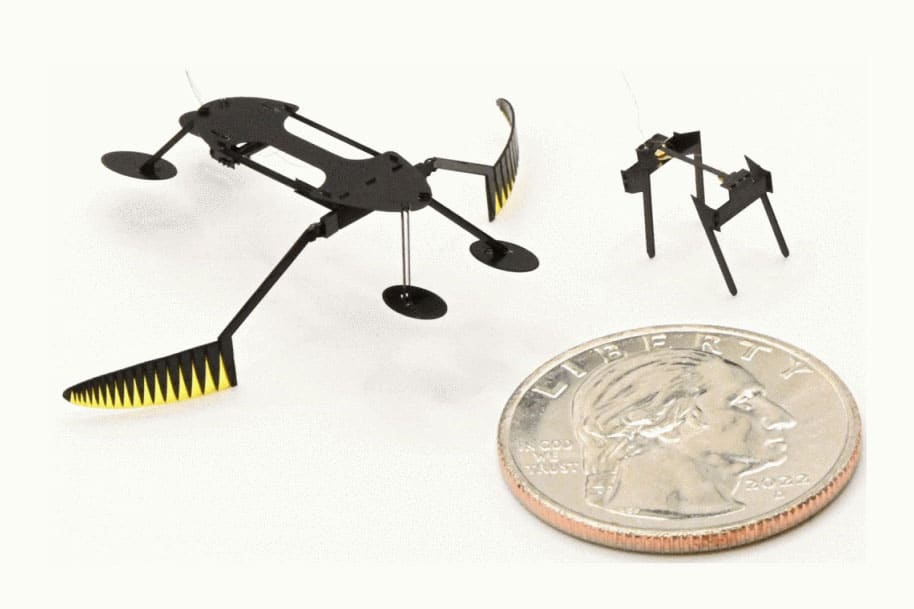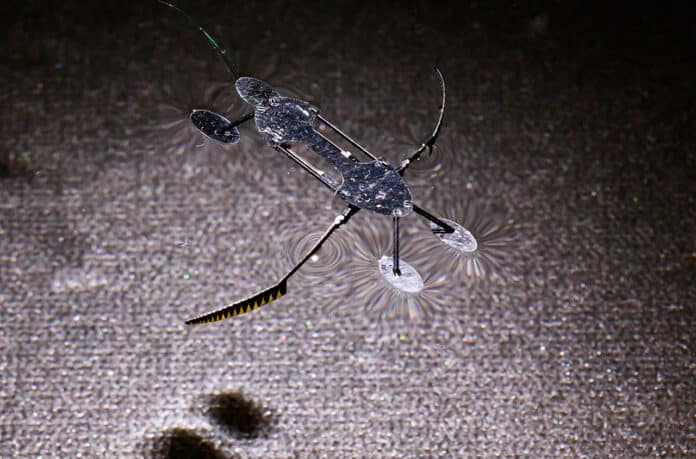Researchers at Washington State University have developed two insect-inspired robots, the smallest, lightest, and fastest fully functional micro-robots ever known to be created.
The smaller, simpler water-bug-inspired robot called the MiniBug weighs in at eight milligrams, while the WaterStrider weighs 55 milligrams. Both can move at about six millimeters a second.
“That is fast compared to other micro-robots at this scale, although it still lags behind their biological relatives,” said Conor Trygstad, a PhD student in the School of Mechanical and Materials Engineering.
The really interesting part of the tiny robots is their tiny actuators that make the robots move. Researchers used a new fabrication technique to miniaturize the actuator down to less than a milligram, the smallest ever known to have been made.
Shape memory alloys are typically considered too slow for large-scale robotic movement. It is called a ‘shape memory’ alloy because it remembers and then returns to its original shape.
However, in the case of the WSU robots, the actuators are made of two minuscule wires made of a nickel-titanium alloy that are only 1/1000 of an inch in diameter and can alter their shape when heated. At 7 mm long, the actuator is reportedly the smallest and fastest ever developed for micro-robotics.
With a small amount of current, the wires can be heated up and cooled easily, enabling the robots to flap their fins or move their feet up to 40 times per second. Additionally, in preliminary tests, the actuator was able to lift more than 150 times its own weight.
Compared to other technologies used for robotic movement, SMA technology requires only a small amount of electricity or heat to make the robots move.

The capabilities of the proposed actuator were demonstrated by creating an 8-mg crawler, the MiniBug, and a bioinspired 56-mg controllable water-surface-tension crawler, the WaterStrider. The MiniBug is 8.5 mm long, weighs 8 mg, and can move as fast as 0.76 BL/s (body lengths per second). It is the lightest, fully functional crawling microrobot of its type ever created.
The WaterStrider is 22 mm long and can move at speeds of up to 0.28 BL/s. It can also execute turning maneuvers at angular rates of around 0.144 rad/s. The WaterStrider is the lightest controllable SMA-driven water-surface-tension crawler developed so far.
These micro-robots could have applications in various fields, such as artificial pollination, search and rescue, environmental monitoring, micro-fabrication, or robotic-assisted surgery.
While the WSU water strider robot uses a flat flapping motion to move, the natural insect uses a more efficient rowing motion with its legs, allowing it to move much faster. The researchers aim to develop a water strider-type robot that can move across the top of the water surface as well as under it by copying another insect. Moreover, they are working to make their robots fully autonomous and untethered from a power supply, possibly by using tiny batteries or catalytic combustion.
